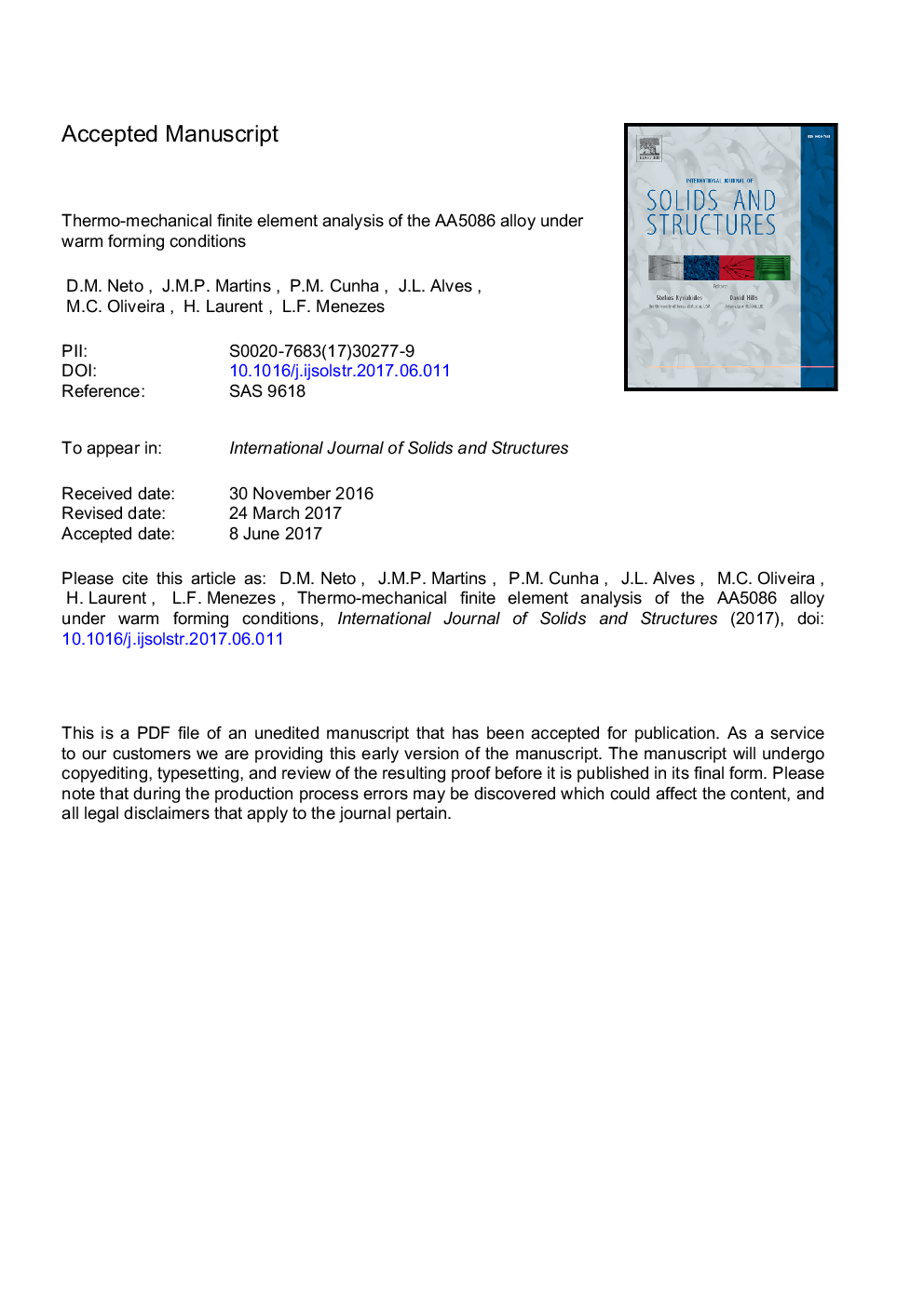| Article ID | Journal | Published Year | Pages | File Type |
|---|---|---|---|---|
| 10225390 | International Journal of Solids and Structures | 2018 | 59 Pages |
Abstract
Warm forming processes have been successfully applied at laboratory level to overcome some important drawbacks of the AlâMg alloys, such as poor formability and large springback. However, the numerical simulation of these processes requires the adoption of coupled thermo-mechanical finite element analysis, using temperature-dependent material models. The numerical description of the thermo-mechanical behaviour can require a large set of experimental tests. These experimental tests should be performed under conditions identical to the ones observed in the forming process. In this study, the warm deep drawing of a cylindrical cup is analysed, including the split-ring test to assess the temperature effect on the springback. Based on the analysis of the forming process conditions, the thermo-mechanical behaviour of the AA5086 aluminium alloy is described by a rate-independent thermo-elasto-plastic material model. The hardening law adopted is temperature-dependent while the yield function is temperature-independent. Nevertheless, the yield criterion parameters are selected based on the temperature of the heated tools. In fact, the model assumes that the temperature of the tools is uniform and constant, adopting a variable interfacial heat transfer coefficient. The accuracy of the proposed finite element model is assessed by comparing numerical and experimental results. The predicted punch force, thickness distribution and earing profile are in very good agreement with the experimental measurements, when the anisotropic behaviour of the blank is accurately described. However, this does not guarantee a correct springback prediction, which is strongly influenced by the elastic properties, namely the Young's modulus.
Related Topics
Physical Sciences and Engineering
Engineering
Civil and Structural Engineering
Authors
D.M. Neto, J.M.P. Martins, P.M. Cunha, J.L. Alves, M.C. Oliveira, H. Laurent, L.F. Menezes,
